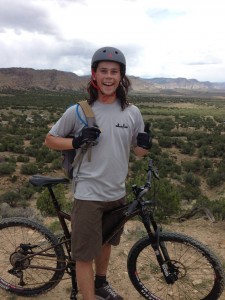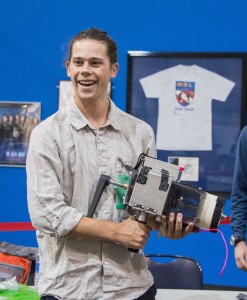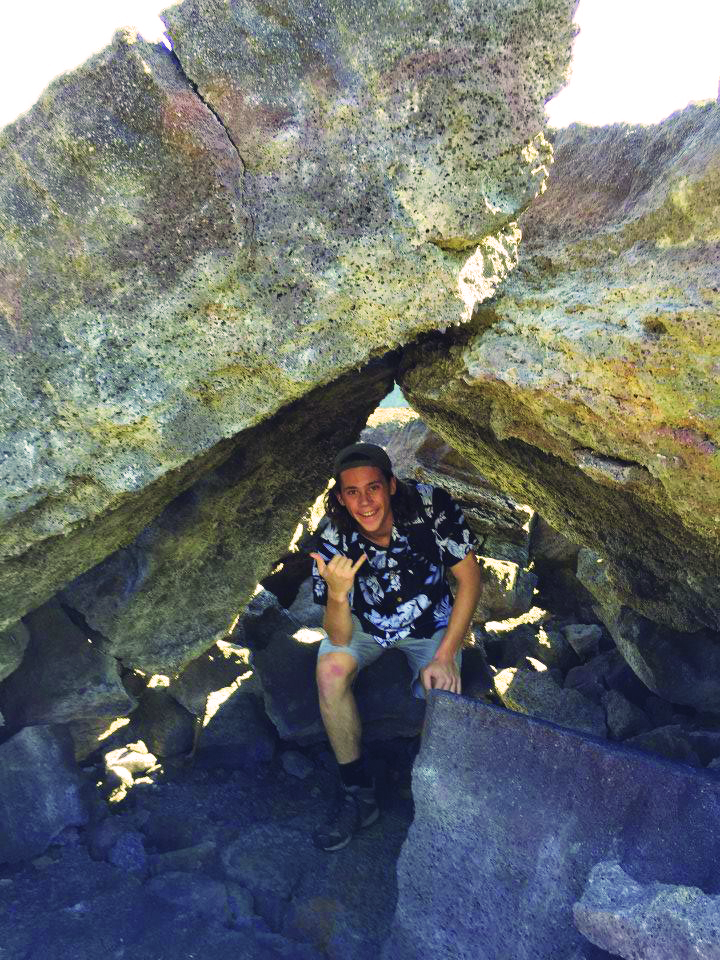Growing up surrounded by the beautiful landscapes of Vermont, Greg Meyer (MC ’16) had a passion for motion. He remembers how, as a child, he would play with sand for hours, watching it change shape in his fingers and developing a basic intuition for how things work. High school brought outdoor sports loaded with terrifying thrills: kayak racing, 40-foot dives, and mountain biking with his friends. “A basic understanding for a lot of scientific things can come from just experiencing them and just playing with them,” Meyer said. His early passion for hands-on encounters would propel him into physics research at Yale, CERN, and the National Institute of Standards and Technology.
When he started at Yale, Meyer’s dedication to FOOT took root easily. He participated as a freshman and would continue to be involved throughout his four years. At first, he took courses spanning a smorgasbord of scientific interests — engineering, neuroscience, and physics. Meyer soon settled on physics: It was the most fun, an extension of his childhood curiosity about how things work.

During his first two summers as an undergraduate, Meyer conducted research in high-energy particle physics at CERN. While working at the laboratory, Meyer lived in a small French town called St. Genis-Pouilly at the base of the Jura Mountains. Every day, he biked to CERN in Switzerland to get to work. Living in France, it turned out, was not only more affordable than Switzerland, but also presented some interesting options for hiking.
While at CERN, Meyer conducted his thesis research on supersymmetry — a system of mathematical predictions used to anticipate and fix problems that arise with the Standard Model. The Standard Model represents our current understanding of how physical matter is made. Supersymmetry suggests that particles already known in the Standard Model have partner particles. The properties of these partner particles lead to cancellations that could fix problems with the Standard Model, such as the question of why the Higgs boson has the mass that it does.
In his thesis research, Meyer was searching for the stop quark, the partner of the top quark in the Standard Model. To investigate the stop quark’s existence, researchers examine the products of decay events — processes in which unstable particles are converted into energy or smaller masses. They look for events that could be attributed to the quark. Still, many more trials are needed to see sufficient statistical evidence that the stop quark exists. And if it does, it would be rare.
Although Meyer no longer works with the supersymmetry researchers at CERN, their project is ongoing: Another trial at a higher energy is currently underway in search of better evidence for the stop quark and for supersymmetry. Meyer’s thesis predicts that if support for supersymmetry is not found during this higher-energy run, the evidence may actually contradict the theory behind supersymmetry. Thus far, supersymmetry has been elusive even to the most dedicated physicists, and all evidence in support of the theory has been indirect.

This past summer, Meyer sought a hands-on project to continue his work in physics. At the National Institute of Standards and Technology (NIST) in Colorado, his research concerned atomic clocks, which use electromagnetic radiation from atomic transitions to keep track of time. Meyer created a computer-programmed device to account for the effects of magnetic fields on the clocks at NIST. A new success in Meyer’s undergraduate physics career, the research reprised a familiar theme — his determination to put his talents towards better understanding and experiencing the world.
Meyer continues to expand his knowledge of physics at Yale. As a junior, he joined the Drop Team, which conducts microgravity research. As he considers the future, he weighs his many areas of interest, and looks forward to attending graduate school in physics.
Of course Meyer also makes time for outdoor activities — Ultimate Frisbee, mountain biking, FOOT, and slacklining. “I love doing physics and thinking, but sometimes it’s just nice to let your cerebellum take over,” he said.
He did have one more thing to add, summing up his lively nature: “Shout-out to my FOOTies!”
Cover Image: From physics to landscapes, Meyer searches for opportunities to explore new terrains. During a trip to Volcanoes National Park in Hawaii, Meyer hiked to a volcano crater. Image courtesy of Greg Meyer.

